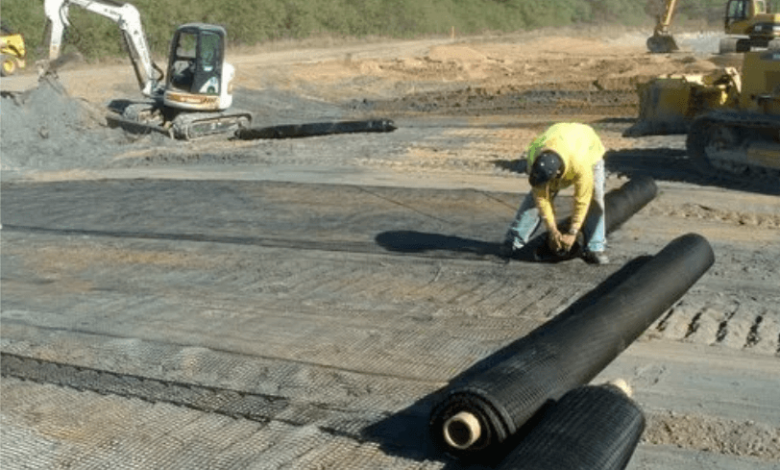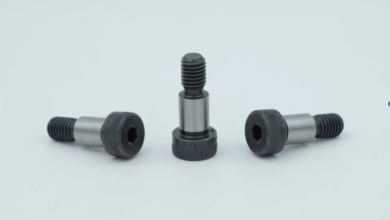Understanding Geogrid: Strength Beneath the Surface

Modern civil engineering projects demand materials that not only ensure strength and longevity but also offer cost-effectiveness and sustainability. Among the many technological advancements in the field, geogrid stands out as a revolutionary geosynthetic material that plays a crucial role in soil stabilization and reinforcement. From roads and retaining walls to railways and embankments, geogrids have become indispensable in infrastructure development.
What Is Geogrid?
A geogrid is a synthetic mesh-like material, often made from polymers such as polyester, polypropylene, or polyethylene. It features a grid structure that forms a matrix of apertures, allowing the interlocking of soil particles. This structure creates frictional resistance and distributes loads across a larger area, significantly increasing the strength of the soil or aggregate layer it supports.
Geogrids are primarily used in construction for soil reinforcement, improving load-bearing capacity, and preventing erosion. They offer superior performance compared to traditional reinforcement methods, especially in weak or unstable soils.
See also: Construction Hoist Elevator: Powering Vertical Efficiency on Building Sites
Types of Geogrid
There are several classifications of geogrid each designed for specific functions and installation conditions. The three main types include:
1. Uniaxial Geogrid
Uniaxial geogrids are designed to endure stress in one direction—usually lengthwise. They are commonly used in retaining wall reinforcement where vertical forces need strong horizontal tension resistance.
2. Biaxial Geogrid
This type of geogrid provides strength in both longitudinal and transverse directions. Biaxial geogrids are ideal for sub-base reinforcement in road construction and ground stabilization applications.
3. Triaxial Geogrid
Triaxial geogrids are a newer innovation that delivers strength in multiple directions. Their triangular geometry ensures uniform stress distribution and improved mechanical interlocking with soil particles.
Applications of Geogrid
The versatility of geogrid makes it suitable for a wide array of civil engineering and construction projects. Some of the most common uses include:
Road Construction
In roadways, geogrids are used to stabilize the base and sub-base layers. They prevent rutting, minimize settlement, and extend pavement life by reducing the need for thicker base layers.
Retaining Walls
Geogrids act as tensile reinforcement in mechanically stabilized earth (MSE) walls and segmental retaining walls, allowing for taller and more cost-effective wall structures without compromising stability.
Railway Infrastructure
Track beds reinforced with geogrids exhibit improved durability and load-bearing capacity, resulting in smoother operations and fewer maintenance requirements.
Embankments and Slopes
For embankments built on soft foundations, geogrids improve shear resistance and reduce the risk of collapse. They are also used in slope stabilization to resist erosion and ground movement.
Landfills and Dams
Geogrids are used to reinforce the lining systems in landfills and provide structural integrity in dam foundations.
Advantages of Using Geogrid
The benefits of geogrids go beyond just mechanical strength. Their implementation in projects often results in environmental and economic advantages as well.
Enhanced Load Distribution
By distributing loads more evenly, geogrids reduce pressure on underlying soils and increase the lifespan of the structure.
Cost Efficiency
Using geogrids allows engineers to use less fill material and thinner pavement sections, leading to savings in materials, transport, and labor.
Environmentally Friendly
With geogrids, the use of local or recycled fill becomes possible, reducing the environmental impact of importing specialized materials.
Improved Safety
Whether stabilizing a steep slope or reinforcing a roadway, geogrids contribute to the long-term stability and safety of critical infrastructure.
Easy Installation
Geogrids are lightweight, flexible, and easy to handle. They require no special machinery and can be cut or joined easily on-site.
Materials Used in Geogrids
The durability and performance of a geogrid depend largely on the material used. Common polymer materials include:
- Polypropylene (PP) – Chemically resistant and ideal for aggressive soil environments.
- High-Density Polyethylene (HDPE) – Offers excellent durability and is often used in landfills and marine applications.
- Polyester (PET) – Known for its high tensile strength and minimal elongation, ideal for long-term soil reinforcement.
The choice of material also affects resistance to UV radiation, chemicals, and biological degradation, all crucial factors in geotechnical applications.
Geogrid vs Other Reinforcement Materials
Compared to traditional reinforcement methods like steel mesh or natural fibers, geogrids offer several distinct advantages:
| Feature | Geogrid | Steel Mesh | Natural Fibers |
| Weight | Lightweight | Heavy | Light |
| Corrosion Resistance | High (non-metallic) | Prone to corrosion | May degrade rapidly |
| Installation | Easy, fast | Requires equipment | Labor-intensive |
| Cost | Lower overall | Higher material costs | Low upfront, high maintenance |
| Durability | Long-lasting | Durable but rusts | Short lifespan |
Design and Engineering Considerations
Before choosing or installing a geogrid, engineers must assess the following:
- Soil Type: Different soil conditions require specific geogrid strengths and types.
- Load Requirements: Knowing expected traffic loads or pressure helps determine grid density and tensile strength.
- Project Duration: Long-term applications demand geogrids with high resistance to weathering and chemical exposure.
- Compatibility: The geogrid must work in harmony with other geosynthetics like geomembranes or geotextiles.
Proper installation also involves site preparation, grading, and compaction of soil layers to ensure maximum performance of the geogrid system.
The Future of Geogrid Technology
As infrastructure demands increase globally, especially in urban areas and regions with difficult terrain, the role of geogrids is expected to grow. Manufacturers are investing in research to create smart geogrids with embedded sensors to monitor stress and deformation in real-time. Innovations in biodegradable and recyclable geogrids are also gaining attention as sustainability becomes a higher priority in construction.
Conclusion
Whether you’re reinforcing a rural road or constructing a massive retaining wall, the use of geogrid offers a strong, cost-effective, and durable solution. Its ability to interact with soil, reduce load pressure, and enhance structural integrity makes it one of the most valuable tools in modern civil engineering.
Understanding the types, benefits, and proper applications of geogrids allows builders, engineers, and developers to deliver better, safer, and more economical projects. As technologies advance, geogrid systems will continue to evolve—shaping the literal and figurative foundation of tomorrow’s infrastructure.




